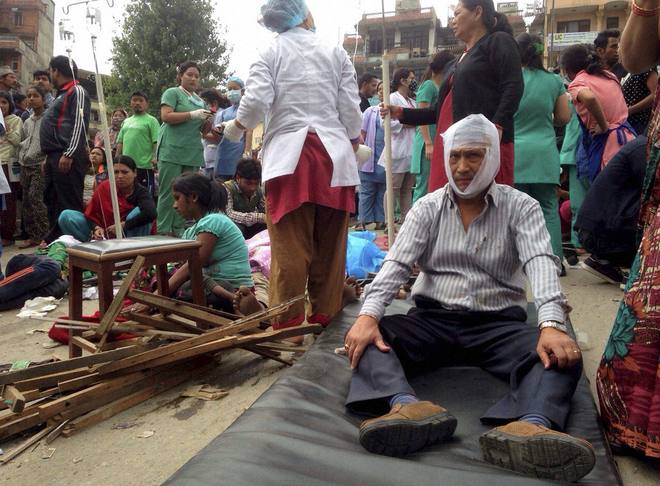Vibha Sharma
Tribune News Service
New Delhi, April 25
Earthquake that hit Nepal on Saturday was being anticipated by seismologists for a long time. The Indian subcontinent is sitting on the highly seismic plate with some major faults lines. In fact, experts believe that there is no seismically safe zone in India.
Because earthquakes cannot be predicted with accuracy, the suddenness of their occurrence makes their impact more intense. According to the IMD, no scientific technique is available anywhere in the world so far to predict the occurrence of earthquakes with reasonable degree of accuracy with regard to space, time and magnitude.
India prone to quakes
Many parts in India lie in the high seismic activity zones IV and V.
Active thrust faults exist all across foothills in North India, the Northeast and into northern Pakistan. Though they cannot be predicted with accuracy, IMD seismologists say the Himalayan region was long “overdue” for an earthquake primarily because of active tectonic movements going on deep underneath.
Why earthquakes occur
As per the IMD, from the concept of plate tectonics, the Indian plate is moving in a north-north-east direction and colliding with Eurasian plate along the Himalayan mountain range.
This collision is responsible for the formation of faults such as Main Boundary Thrust, Main Central Thrust, etc in and along the Himalaya. Almost all major earthquakes in India and its adjoining region occur along these faults.
Earthquakes occur due to forces of geological origin along weak planes called faults. The earthquakes occurring near plate boundaries such as Himalaya are known as interplate earthquakes. Apart from earthquakes from the Himalayan belt, there have been earthquakes of relatively lesser magnitude and lesser frequency in the Peninsular India also.
Indian seismicity
India has broadly been divided into four seismic zones — zone-II-V. Seismologists say the wave of strong earthquakes, ever since the Sumatra earthquake that triggered tsunami, the Indian plate boundary has become seismically active.
Unlock Exclusive Insights with The Tribune Premium
Take your experience further with Premium access.
Thought-provoking Opinions, Expert Analysis, In-depth Insights and other Member Only Benefits
Already a Member? Sign In Now











